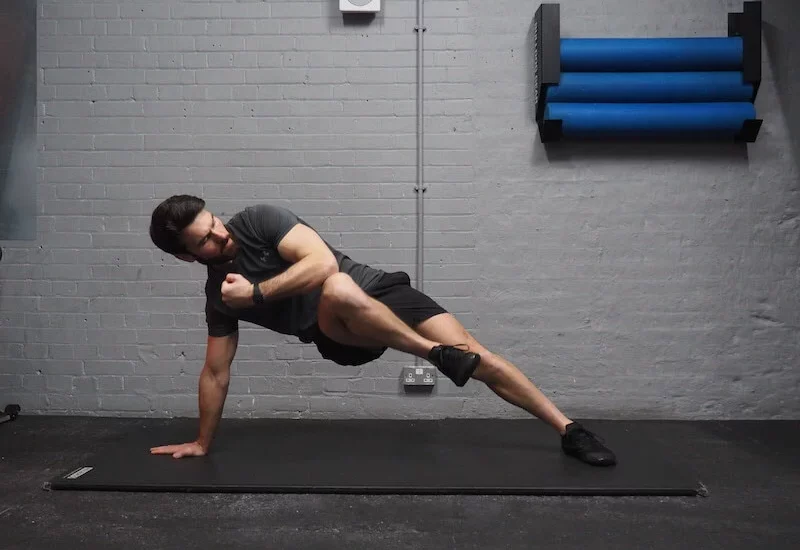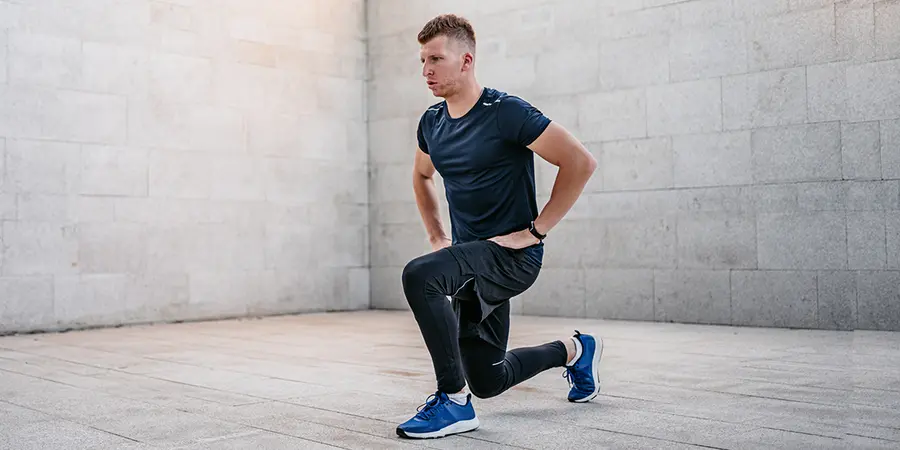


The need of a good warm-up regimen is often overlooked, despite its importance in achieving optimal workout performance. Warming up with a focus on the legs can dramatically improve muscle function, reduce injuries, and set the stage for a productive training session. This comprehensive guide explores the significance of leg warm-up exercises, their contributions to overall workout performance, and provides an extensive list of effective exercises to seamlessly integrate into your routine.

Leg warm-ups provide a variety of advantages, and a well-structured warm-up routine bridges the gap between a sedentary state and high-intensity exercise:
To initiate an effective workout, begin with a balanced warm-up routine. Incorporate light aerobics like brisk walking to elevate your heart rate, promoting heightened blood circulation and nutrient delivery to muscles. Simultaneously, engage in dynamic leg stretches, mirroring your workout movements to enhance muscle readiness and joint flexibility. This interplay between circulation and stretching optimizes energy production, expels waste, and reduces fatigue, ensuring a well-prepared body for a productive workout session.
During the warm-up phase, key leg muscular groups, including the quadriceps, hamstrings, glutes, and hip flexors, are strategically engaged. These critical muscle groups are gently activated and prepared for upcoming activities, ensuring their readiness for the demands of your workout. By targeting these muscle clusters, the warm-up primes your body for optimal performance, reducing the risk of injury and promoting efficient movement patterns during your exercise routine.
Leg swings, ankle circles, and hip rotations can be done as part of your warm-up to improve joint flexibility, which is a prerequisite for exercises like squats and lunges. These rapid motions efficiently lubricate and mobilise the joints, enabling the performance of these compound workouts with more control and fluidity. You may achieve good form and increase the efficiency of your squat and lunge routines by include leg swings, ankle circles, and hip rotations in your exercises.
Leg warming is essential for preventing injuries since it actively conditions the muscles and connective tissues. These essential structures are adequately prepared during this phase of preparation to withstand the stress and strain brought on by vigorous physical activity. The warm-up reduces the risk of strains, sprains, and injuries by gradually boosting blood flow, flexibility, and range of motion. This precaution is a crucial part of a safe and successful workout regimen and will help you achieve overall fitness achievement.
Leg warm-ups have advantages that go beyond the muscles by triggering the nervous system, providing a comprehensive gain. This stimulation strengthens the connection between the brain and muscles, promoting greater communication between the brain and muscles. Your coordination and movement patterns improve as a result, enabling more accurate and effective exercise performance. Leg warm-ups are important because they not only prepare your muscles but also improve your general neuromuscular function, which leads to better training results and a lower chance of injury.
Integrate these leg warm-up exercises into your routine for comprehensive benefits:
Start off dynamically with 5–10 minutes of vigorous cycling, jogging, or walking to kickstart your warm-up. Your heart rate rises during this early period of action, alerting the body to enhance blood flow. As a result, your muscles receive quick access to nutrients and oxygen while also receiving effective metabolic waste removal. This rhythmic start creates the mood for an energising warm-up, which optimises your physiological state for the forthcoming effective workout.
For targeted advantages, including a series of leg swings in your warm-up regimen. Swing each leg 10-15 times forward and backward before switching to lateral swings. Your hip joints are actively involved in this purposeful action, which encourages improved flexibility and mobility. The muscles surrounding the hips are stretched and activated as you slowly swing your legs through these motions, preparing them for a wider variety of workouts. Focusing on hip mobility will enhance functional movement and lower your chance of injury during your workout.
Perform ankle circles as part of your warm-up routine to emphasise ankle health. With each ankle, make 10 to 15 circles in both the clockwise and anticlockwise directions. The range of mobility in the joints and ankles are improved by this careful action. You can nourish the joint and advance general ankle health by stimulating fluid circular motions, which in turn increase synovial fluid circulation. Ankle circles are an excellent way to build a strong foundation for steady, self-assured movement throughout your workout.
Use controlled bodyweight squats as part of your warm-up routine to build powerful leg muscles. These intentional squats should be performed 10 to 15 times, working important muscle groups like the glutes, hamstrings, and quadriceps. These important leg muscles are efficiently activated by this deliberate movement pattern, which also promotes blood flow and warms the tissues. Bodyweight squats help you improve your squatting form for a more powerful and effective workout while also preparing your muscles for impending difficulties.
By performing 10-15 repetitions of swinging your knees side to side while resting on your back, you can improve hip mobility. By deliberately stretching the hip joints, this movement encourages increased flexibility and range of motion. You are successfully lubricating the hip joints and promoting synovial fluid circulation by doing this repetitive rocking. This specific warm-up method helps to make your workout more comfortable and seamless by preparing your hips for more dynamic motions.
As part of your warm-up routine, perform a series of walking lunges to engage major muscle groups. Perform 10–15 walking lunges with each leg, paying attention to careful and controlled motion. This exercise efficiently works the quadriceps and hip flexors, increasing blood flow and igniting muscular activity. Walking lunges help you prepare these crucial muscles for exercise while also improving your stability and balance for the challenges ahead.
Improve hamstring flexibility and engagement with a focused warm-up exercise. On your back, elevate each leg for 10 to 15 seconds. This deliberate motion gradually stretches the muscles while efficiently engaging the hamstrings. Leg raises are a great way to enhance muscle balance and range of motion for a more efficient and injury-resistant workout session. They help prepare your hamstrings for upcoming activities.
Your warm-up routine should include 10-15 controlled repetitions of glute bridges. The glutes and lower back muscles are effectively activated throughout this exercise, preparing them for impending trials. By practising glute bridges, you’re fostering increased stability and support for your spine in addition to stimulating essential muscle groups, making for a more complete and efficient warm-up.
By precisely completing 10-15 calf raises on the edge of a step or platform, you may precisely warm up your calf muscles. The calf muscles and Achilles tendon are effectively worked by this targeted workout, which also improves blood flow and flexibility. Calf raises help your lower leg muscles get ready for a variety of activities, providing a solid foundation for your workout. Include them in your warm-up regimen.
Increase the quality of your warm-up routine by incorporating dynamic stretches into it. Try knee hugs, leg swings, and leg crossovers to deliberately increase your range of motion. These intentional motions increase joint mobility and muscle flexibility, ensuring a more thorough pre-workout routine.
Strategically improve your warm-up by designing dynamic stretches that correspond to the activities of your future workout. If you want to do squats, for example, include leg swings that mimic the squatting motion. By repeating these motions, you prime particular muscle groups while simultaneously enhancing their flexibility and preparing them for the activities to come.
Consider including targeted foam rolling before starting your warm-up programme. This pre-workout step specifically targets particular muscle groups, enhancing blood flow and reducing tension. By including foam rolling into your workout routine, you’re improving muscular flexibility and laying the groundwork for a more efficient warm-up, which will improve your workout experience overall.
Increase the efficiency of your workout by incorporating workouts that target muscle activation. Consider adding glute activation exercises like clamshells or banded lateral walks to your deadlift routine for impressive results. With the help of these focused workouts, you may fine-tune particular muscle groups, maximising their engagement and stability throughout your main workout and eventually improving performance and injury prevention.
Start your warm-up routine with easy exercises and work your way up to more difficult ones. Your body is prepared for the upcoming workout demands thanks to this progressive intensity escalation. This gradual technique improves blood flow, joint mobility, and muscle activation, ensuring the best possible readiness for the activities that are coming up.
Incorporate deep breathing techniques into your warm-up routine to promote muscle relaxation and increased oxygenation. This deliberate attention to your breathing encourages a stronger mind-muscle connection, which improves coordination and movement accuracy. Additionally, deep breathing helps to reduce stress, which promotes a calmer setting for a warm-up routine that works.
During your warm-up, be aware of your surroundings and the surrounding temperature. Consider lengthening your warm-up in chilly weather to guarantee complete muscle preparation. This preventative measure defends against future stiffness, enhancing your muscles’ preparedness for the forthcoming workout and resulting in a more productive and comfortable session.
Give yourself enough time to warm up. Your warm-up’s duration and intensity should be inversely correlated to that of your primary workout.
Include exercises that will test your stability and balance, like easy yoga positions or single-leg stands. Proprioception and joint stability may also benefit from this.
Make use of the warm-up to mentally get ready for your workout. Get into the correct frame of mind, concentrate on your objectives, and visualise your workouts.
Pay attention to how your body responds during the warm-up. If you notice any areas of tightness or discomfort, address them with specific stretches or mobility exercises.
Play energetic music during your warm-up to boost your motivation and rhythm. Matching your movements to the beat can enhance your coordination.
If you use pre-workout supplements, time their consumption to coincide with your warm-up, so you feel their effects during your main workout.
Consider incorporating a brief cool-down period at the end of your warm-up, including static stretches for the muscles you’ve engaged. Always keep in mind that the goal of a warm-up is to lower the chance of injury while preparing your body for the demands of activity. Depending on the type of workout you’re planned, your degree of fitness, and any special circumstances, modify your warm-up programme. Your total workout performance and long-term fitness journey can be greatly impacted by a thorough warm-up.
A great training plan must start with a complete leg warm-up. Leg warm-up exercises should always come first since they not only improve muscle function and avoid injuries but also pave the way for outstanding workout results. This thorough manual provides you with the information and workouts need to get your legs ready for the demands of vigorous exercise. Remember, a body that has been properly warmed up is one that is strong and effective, ready to take on any physical challenge. Spend some time on a deliberate leg warm-up, and you’ll see your workout performance soar to new heights.
Teeth Bonding Before And After: Transforming Smiles With Cosmetic Dentistry